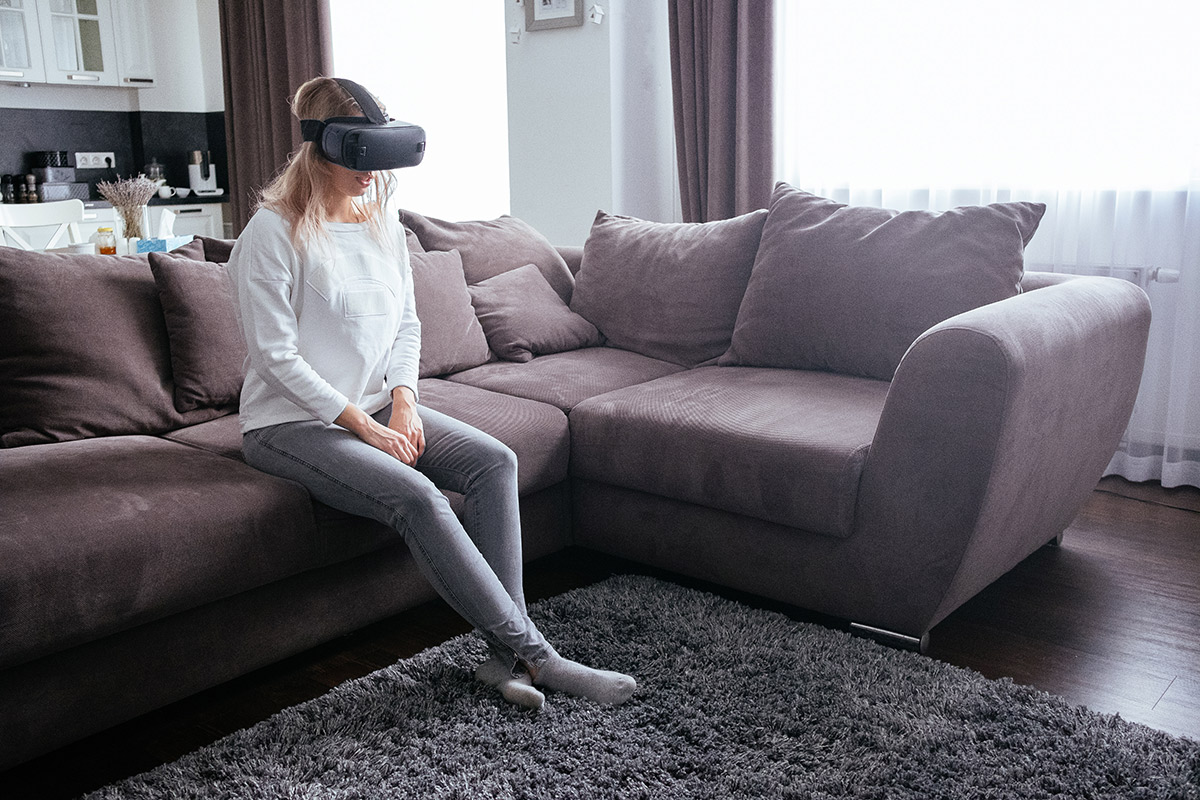The pandemic has reminded us of the importance of community to our humanity. Connecting and relating to others is a necessity for our well-being as individuals and as groups. The ability to set aside one’s own perspective and lifetime of experience in order to imagine life as another is critical to increase human compassion and an asset to overcoming oppression. Empathy, for most, takes great effort to experience and sustain. It is a cognitively taxing ongoing process that requires active engagement, constant vigilance, and a sociological perspective. With all the world’s progress, shouldn’t there be an easier way to become more empathetic?
Virtual reality (VR) systems may be capable of making the experiences of others readily available and the experience less like cognitive and emotional work and more like the passive consumption of television. Why would this be the case?
Imagine putting on a headset and seeing a different reality. In the reality you meet a guide who takes you through a day in their life, while showing you and telling you what they experience. Learning about another’s life from their perspective and seeing it before your eyes should make you feel closer to, and thus more able to empathize with the person and the groups they belong to. Experiencing this through VR then, in theory, should help us overcome a large barrier to empathy, reducing psychological proximity, or the idea that that groups or individuals they feel like they have more in common with based on similarities in their experiences. While popular media and academics generally support the claim that VR is an “ultimate empathy machine,” my co-authors Andrew Hargrove and Jason Jones of Stony Brook University, New York were suspicious of this seemingly easy solution, to such a universally difficult and important obstacle.
“We decided to do an experiment to see if VR could elicit empathy, and if it did, where VR fell on a continuum of empathy compared to other “tools” people have identified as increasing empathy.
We decided to compare empathy elicited from a VR experience (passive) to an embodied experience (active) to see which was more likely to increase empathy and randomly assigned our participants to one of the two experiences, asking them to take a survey before and after to measure their empathy levels,” explained Jamie Sommer, co-author of the study.
The first treatment, the VR experience, had the participant follow a 13- year-old Ethiopian girl as she collects water and talks about the burden that carrying water has on her life. The experience is 9 min and 4 s and can be accessed on YouTube.
In the experience, the young woman narrates her experience with water collecting, her responsibility to her family, the dangers of walking a long distance to collect water, the school that she misses out on, and how her life changed after getting a freshwater pump in her village. This video was created by Charity: Water, a non-profit organization that claims that donors that experienced their VR activity increased their donations by $3 million.
The second treatment, the embodied activity, consists of carrying two one-gallon water jugs through a temperature-controlled building for 10 minutes. The path that participants walked consisted of hallways and one small open space. The researchers would accompany the participant for the first 2–3 min of water carrying to familiarize them with the path and to provide context for the activity. The participants were given several water-related facts while they walked, but for the most part, were left alone to continue carrying the water jugs. After the 10 minutes were up, the participants were asked to stop.
These two treatments allowed a test for the differential effect of having a VR experience about water carrying as compared to an embodied experience actually carrying water. So, is VR an easy solution to increase human compassion and an asset to overcoming oppression? Our study suggests the answer is, not quite.
“While our findings are consistent with previous research that finds VR experiences increase empathy and attitude changes, our results do not suggest we should start opening up VR labs that people can visit to become more empathetic or to increase donations to a cause. When we compared the empathy elicited from the VR experience to the embodied experience of carrying water we found no difference in the treatments,” continued Sommer.
The findings suggest that even an embodied experience, which theoretically should allow closer psychological proximity than, for example, reading an article or watching a film, does not elicit more empathy than a VR experience. Moreover, the water carrying participants actually donated more than their VR peers, but not significantly higher. Put differently, if both VR and an embodied experience can represent a person, group, or subject of interest in a laboratory, VR will not do any better at increasing empathy or donations than the embodied experience.
“Considering both this study and our previous research, my co-authors and I believe VR as an empathy delivery system probably is not a better delivery system than an embodied experience, when possible, so we should think about other delivery systems when possible so we do not use newer technology, just for the sake of using it or because of the idea that something being passive is always easier or more enticing to people than something active. Advertising an event as having VR may be just as enticing as advertising an event where you have to do something weird like carry jugs of water.”
